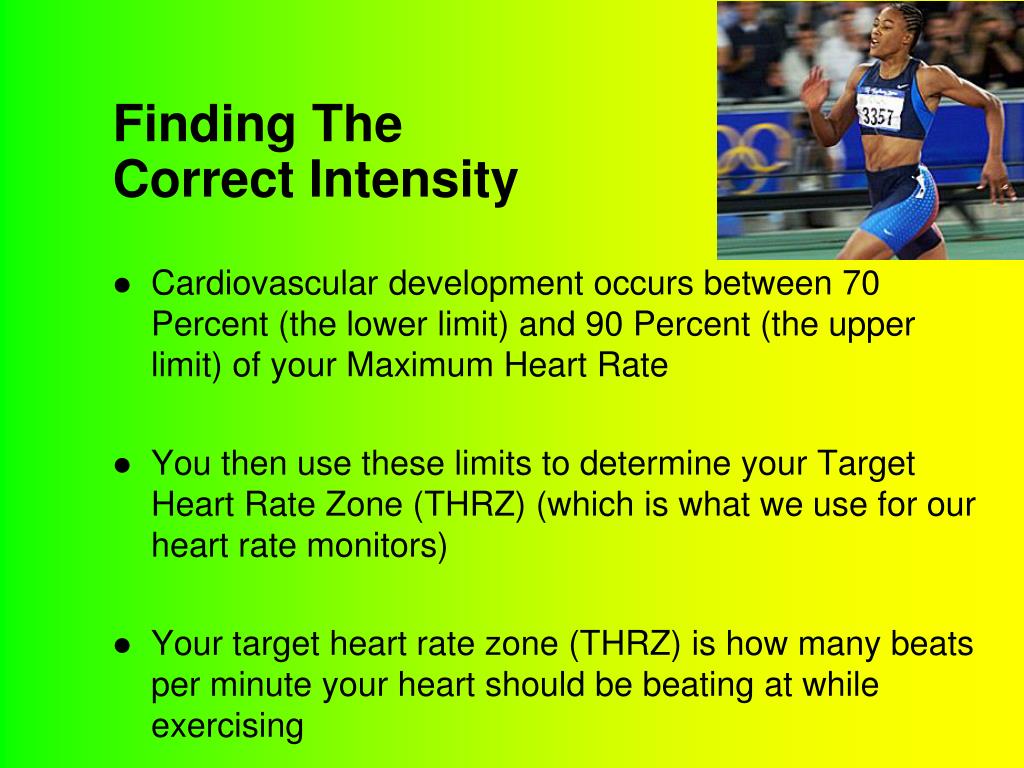

#CARDIOVASCULAR ENDURANCE DEFINITION FULL#
Using these methods combined then the body can utilise the phosphogen system for energy for a full 13.5 seconds, making it the best type of energy for explosive movements, such as weight lifting, 100 metre sprinting or jumping. This then supplies an additional 8-10 seconds of energy on top of the initial 3 seconds and can be used by the body for extended explosive exercise. Creatine is meanwhile used by the body to recombine ADP and AMP to make new ATP that can be once again used by the body. Fortunately however the body also stores and produces another substance called Creatine in the Kidneys. In other words, they are the two parts of the ATP once the bonds are broken. These are similar to ATP, except in that they describe adenine nucleotides with just two or one posphates respectively. When these bonds are broken they release energy, which the body then utilises to power the muscles etc and which forms the basis of the posphogen system, powering the body for 3 seconds using the ATP stored in the muscles.Īs well as giving off energy however, the phosphogen system also has two other by-products, ADP and AMP, which stands for Andenosine Diphosphate and Andenosine Monophosphate respectively. ATP you see is an adenine nucleotide made up of three phosphates attached by powerful high-energy bonds. ATP stands for ‘Andenosine Triphosphate’, a name that describes the chemical composition of the substance. To fully understand the definition of cardiovascular endurance, it’s important to understand how the body utilises energy to power its muscles.Įssentially, all energy in the body of every living organisms comes from a substance called ‘ATP’, the ‘energy currency’ of life on Earth. In a marathon, the person who comes first (while allowing for injury or general poor technique) will generally be the person with the best cardiovascular fitness. This is the system that kicks in third after the phosphogen and the glycogen lactic acid system, and so the one that supplies energy to the human circulatory system and the muscles over extended periods.Ĭardiovascular endurance is most useful for long distance sports for marathon training, long distance running, jogging and swimming, however it will also be useful for everyone else and a lack of it will lead to individuals becoming quickly tired and out of breath. Prediction of performance continues to fall away as the sport becomes reliant on skill, so that an athlete with excellent cardiovascular fitness may not be very good at football, even though it is a vital component for a football player to develop.The definition of cardiovascular endurance simply put is the body’s ability to continue exertion while getting energy from the aerobic system used to supply the body with energy. For example, if you do well in the beep-test (which measures cardiovascular endurance) does not mean you will be a great rower, as this type of fitness will vary in level according to the muscles used, although there will always be some cross over for this component. An athlete who has good cardiorespiratory fitness will perform better in such sports than those who do not. Examples of these include, marathons, cycling, triathlons, or long distance swimming. Testing cardiorespiratory endurance via maximal or sub-maximal VO2 testing will provide a good prediction of performance in aerobic based sports, particularly ones that do not rely heavily on skill.


In order to have good cardiorespiratory endurance you must have an efficient cardiorespiratory system delivering oxygen to the working muscles. Furthermore, the lack of fatigue also means that the athlete’s technique will be maintained and allow for greater consistency in the execution of their skills.

This means that the athlete’s performance will improve as a result of their high levels of cardiorespiratory endurance. Or at least that fatigue will be delayed. Good cardiorespiratory endurance means that your body can work at higher intensities for longer without fatigue. Good cardiovascular endurance helps to improve movement efficiency. Later we will link this with aerobic training, and in HSC PDHPE you will go deeper looking at the aerobic energy system which relies upon the cardiorespiratory system. It is a measure of how well your cardiorespiratory system works to enable movement. In order to maintain this movement your bodies heart, lungs, blood and muscles all have to work together to absorb, deliver, and utilise oxygen in the production of energy enabling you to move. Cardiorespiratory endurance is also known as cardiovascular endurance or aerobic fitness and refers to the bodies ability to maintain movement for an extended period of time. Cardiorespiratory endurance is our first dash point for the health-related components of fitness.


 0 kommentar(er)
0 kommentar(er)
